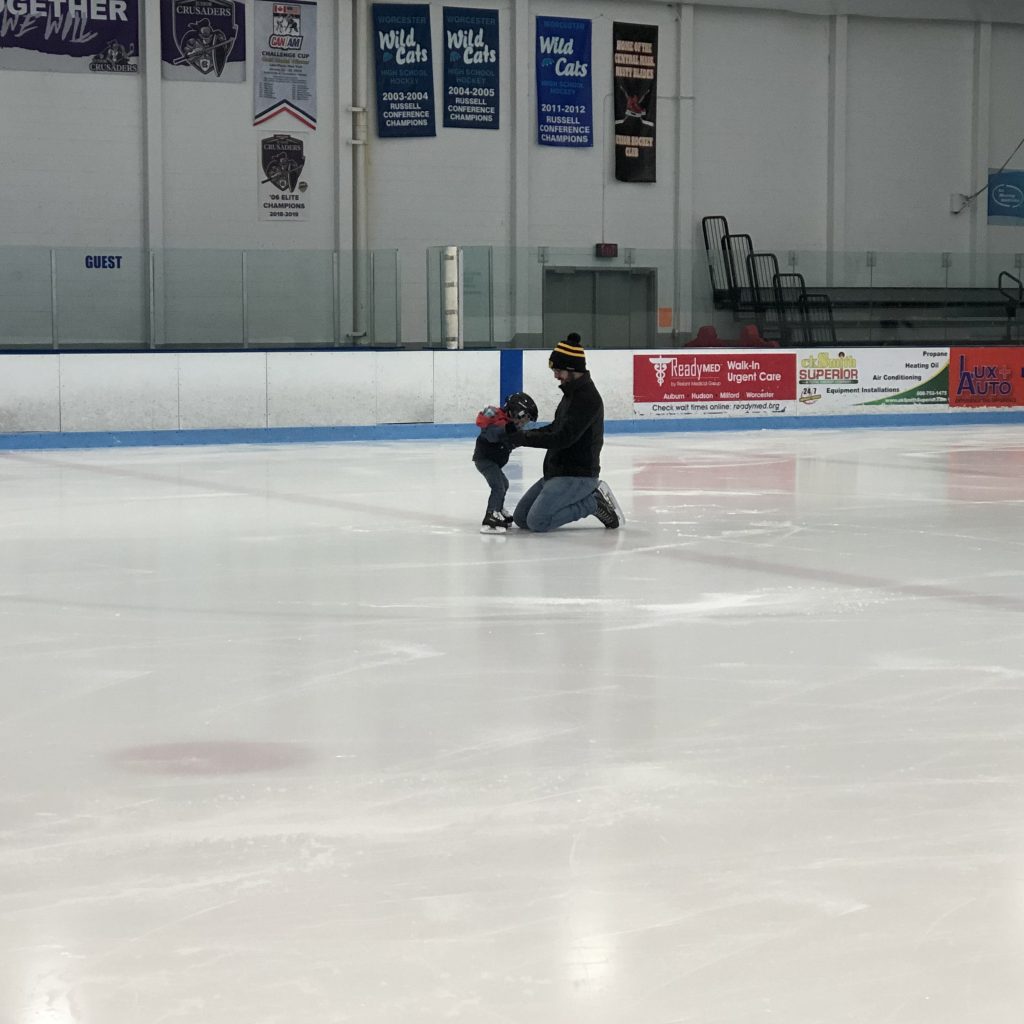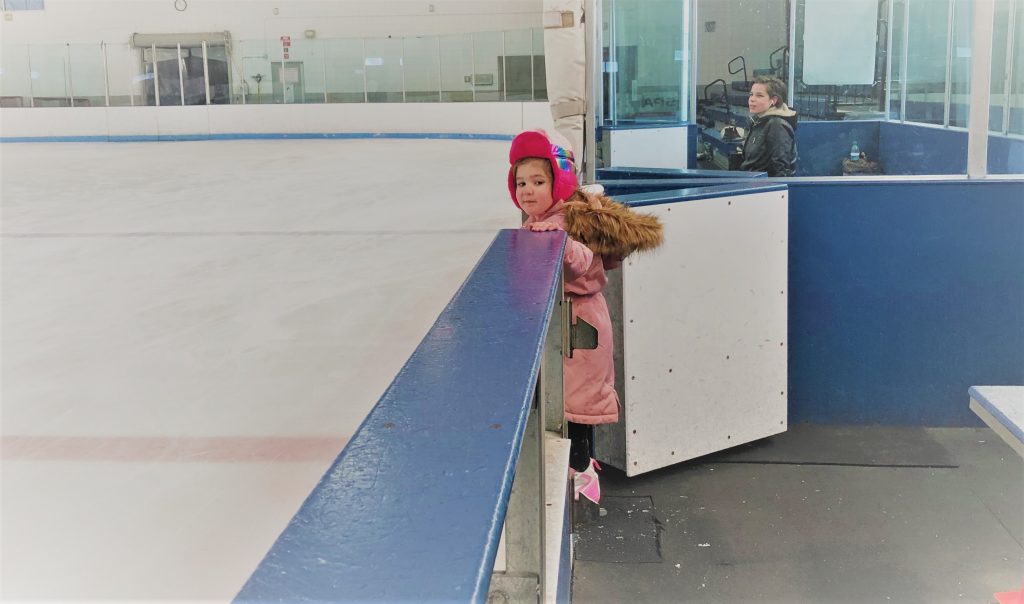
21 Tips & Tricks to Enjoying Your First Skating Experience!
We hope that you’ve decided to come join us on the ice. To help your first experience go as well as possible, here are some helpful tips and a little bit about what to expect.

- Sometimes, seeing the facility and how things
run can help ease anxiety, set a realistic expectation (everyone falls 😊)
and make the first experience easier. - If you’re unable to visit, know that rinks are
often busy, can be loud and are likely cold – especially in the rink. Even
those who are not going on the ice should dress warmly. - Take advantage of rental skates if they are
available. Leave time to put skates on and get the right size. Rental skate
styles can vary so it might take a few attempts to get the right fit. - Dress in layers that allow for movement. Long
sleeves and pants, gloves or mittens are a must. - Properly fit skates position the foot over the
blade so that it can be controlled. Just like shoes, skates that are too big or
too small can make skating difficult and often cause blisters or other
unnecessary soreness. - Know that it’s OK to fall. “Help” the fall by
bending your knees, reaching hands out in front and trying to freeze. If you
need to go all the way down, sit on the ice like you would on the floor. Try to
land on a meaty body part as opposed to a bony one. Tucking the head or arms can
be helpful, too. - A helmet is strongly suggested. A bike helmet is
sufficient although caged helmets can offer additional protection. - To get up, start on your hands and knees then
sit up tall. Put one leg up so that the foot is flat. Keeping your head on top,
use your hands on your knee or one on the ice/floor and one on your knee to
push up. Place the other foot flat and freeze with hands in front and a little
bend in the knees. - Waterproof clothing can be great for little
ones. - For safety, it’s strongly suggested that little
ones are not held or carried on the ice. - When buying skates, purchase a size that is true
to the foot at this moment. While it may seem attractive to buy skates that can
be grown into, the extra space alters the way the foot sits over the blade and
makes skating more difficult. It can also cause injury or unnecessary soreness. - If you’re taking Learn to Skate lessons, arrive
early and expect an organizational system. Programs may use nametags, color
coding, arranging skaters off ice and more to help create a flow for skaters
through the building. - Tie skates right. Make sure that the foot is all
the way into the boot. Toes should be comfortable and the whole foot should
stay put for the most part. Tie laces all the way up using all of the hooks. If
a lace is too short, ask for a new pair. Laces shouldn’t move easily if you run your finger across them. - Try falling down and getting up off ice before
going on ice. This exercise can make a big difference. - Be careful of equipment like elbow, knee and
shin pads, that can hinder movement and make it more difficult to skate. - For first timers, it’s best to march first.
Holding onto the wall with one hand can help, too. - New skates often need to be sharpened before
they can be used. - Be sure to adhere to required codes of conduct
and if using an open skating session, to use common sense with traffic flow,
speeds and the appropriate type of skating to keep everyone safe. - When skating with a little one, try to help them
bear their own weight and spot them to give them confidence. The effect of a
parent holding or carrying them to stay up can be a lot like a skating aid (think
crates): Skaters don’t actually get the feel of standing on their own and often
have difficulty when it’s time to skate by themselves. - Be sure to keep breathing! When we’re scared, we
tend to hold our breath. Breathing can make all the difference!
We hope you have a great time. Visit our locations page or call 1-888-74-SKATE to find an FMC Ice Sports operated skating facility near you.
